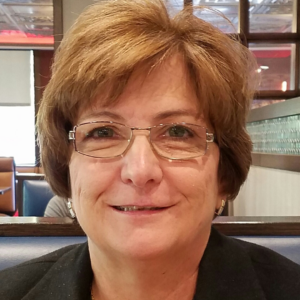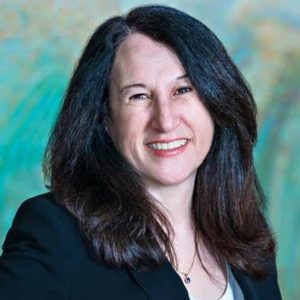The benefits of dysphagia evaluations
Swallowing disorders, known as dysphagia, can occur at any age and can have very serious consequences for older adults. Dysphagia may result from dementia, Parkinson’s disease or stroke and can cause aspiration pneumonia and even death. Speech language pathologists are uniquely qualified to diagnose and provide treatment for dysphagia because they have extensive knowledge of the anatomy, physiology and functional aspects of the upper digestive tract for swallowing and speech.
Many people ask why an instrumental evaluation is so important. A bedside swallow assessment cannot determine the appropriate diet consistency and having residents tuck their chins when they swallow isn’t sufficient. An instrumental assessment is necessary for appropriate care.
If dysphagia of the pharynx, or throat area, is suspected, we recommend an instrumental evaluation, which may be a modified barium swallow study or a fiber-optic endoscopic evaluation of swallow (FEES). These tests allow trained clinicians to view residents’ swallow structure and assess swallow function while eating solid foods and drinking liquids. This assessment is recorded on video and then analyzed to determine appropriate positional maneuvers, compensatory strategies and necessary diet modifications to increase residents’ swallowing safety.
During the past several years, mobile FEES services have been increasingly available across the country, which has made this procedure more prevalent. FEES involves passing a flexible endoscope through the nasal passage into the throat.
The benefits of FEES versus sending residents out for a modified barium swallow are many:
- The procedure is considered a gold standard.
- It is accurate, safe and anyone can participate.
- The cost is significantly less than a modified barium swallow.
- The procedure can be completed bedside and reduces the expense of transporting residents to a hospital or clinic.
- A report is provided immediately following the study—before the speech language pathologist leaves the building.
- The primary treating therapist as well as staff or family members can also be present during the assessment.
- The study can utilize food from residents’ meals, medications and any requested foods.
- The procedure generally takes less than 20 minutes to complete.
One of the biggest barriers to making clinical decisions about how to treat residents with a swallowing impairment is the lack of an instrumental assessment. FEES provides objective data about their swallow function and crucial factors in residents’ lives, such as:
- Whether residents are aspirating—when food or liquid enters the airway instead of the stomach
- What consistencies they aspirate, or don’t, when swallowing
- If residue remains in the throat following the swallow and where it’s located
- What structures are not functioning properly, resulting in aspiration or residue after the swallow.
An instrumental evaluation also allows speech pathologists to try positional maneuvers and compensatory strategies. None of this information can be determined accurately without an instrumental evaluation. It is like asking an orthopedic surgeon to fix a hip without first determining if the hip is fractured and where the fracture occurred.
A small number of residents may not tolerate the procedure. Our experience has been that very few residents have not been able to participate. Severe agitation and/or anxiety is the most frequent barrier. Having a staff or family member present to hold residents’ hand and keep them calm can often increase the ability to safely pass the scope. Other contraindications include cardiac disorders with a history of vasovagal episodes or fainting and severe bleeding disorders. We have seen only two incidents where the procedure was not possible because of bilateral obstruction of the nasal passages. The most adverse effect is typically discomfort or occasional gagging.
We have seen great benefits utilizing FEES during the past few months. One result is fewer residents have to drink thickened liquids that do not increase the ability to safely swallow. In addition, fewer residents have been instructed to use compensatory strategies or positional maneuvers that do not lessen their risk of food and liquids from entering their airways.
We have also seen residents who had unsafe diet upgrades. While the residents did not show outward signs of difficulty, their diet upgrades would have resulted in increased risk of frequent pneumonia or even choking. Residents and family members also appear to have a better understanding of swallowing impairment and risks after seeing the swallow anatomy in a 3-D color image. In many cases, this results in increased compliance with recommendations.
We hope you have the opportunity to utilize fiber-optic endoscopic evaluations at your community if you don’t already. The benefits to the residents’ care and quality of life can be truly exceptional.
 Kristy Brown, MS, CCC-SLP has more than 25 years of management experience as CEO and President of Centrex Rehab and as former executive director of therapy services at Augustana Therapy Services. Brown can be reached at kbrown@CentrexRehab.com.
Kristy Brown, MS, CCC-SLP has more than 25 years of management experience as CEO and President of Centrex Rehab and as former executive director of therapy services at Augustana Therapy Services. Brown can be reached at kbrown@CentrexRehab.com.
 Melanie Theis, M.Ed. CCC-SLP, is a speech language pathologist at Centrex Rehab with more than 23 years of experience and is trained in fiber-optic endoscopic evaluation of swallowing. Theis can be reached at mtheis@CentrexRehab.com.
Melanie Theis, M.Ed. CCC-SLP, is a speech language pathologist at Centrex Rehab with more than 23 years of experience and is trained in fiber-optic endoscopic evaluation of swallowing. Theis can be reached at mtheis@CentrexRehab.com.
Related Articles
Topics: Alzheimer's/Dementia , Articles , Clinical , Nutrition











